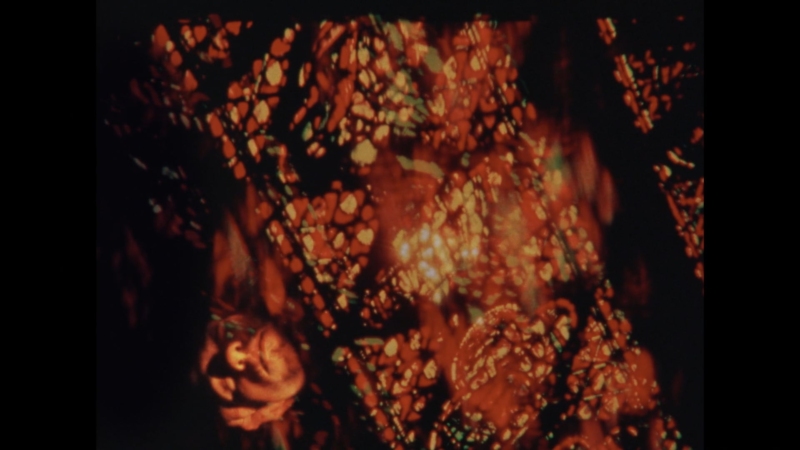READER: OURSELVES IN THE OTHER
24.07.2025
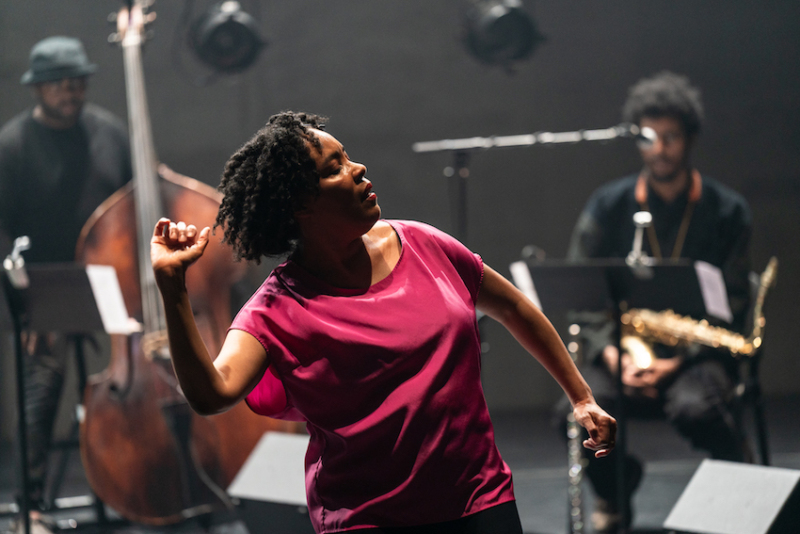
Ashkan Behzadi: Carnivalesque (2014–16) – 9′
for Flute (Piccolo), Bass Clarinet, Percussion, Piano, Violin, Viola & Violoncello
Elaine Mitchener: th/e s/ou/nd be/t/ween (2023) – 12′
for Contralto, Flute, Electric Guitar, Electric Bass & Percussion
Yaz Lancaster: ourselves in the other (2024) – 15′
for Flute, Bass Clarinet, Percussion, Electric Guitar, Electric Bass, Piano, Violin,
Viola, Violoncello, Electronics
World Premiere
Commissioned by the International Contemporary Ensemble
Corie Rose Soumah: Tossed Parachutes of Lilacs and Lungs (2025) – 12′
for Flute, Clarinet, Percussion, Electric Guitar, Piano, Violin, Viola,
Violincello & Electronics
World Premiere
Commission of the Darmstadt Summer Course and The Earle Brown Music Foundation Charitable Trust
Marcos Balter: Árvore (2025) – 10′
for Flute, Clarinet, Percussion, Electric Guitar, Electric Bass, Piano, Violin, Viola,
Violoncello & Electronics
World Premiere
Commission of the International Contemporary Ensemble, the Darmstadt Summer Course and
The Earle Brown Music Foundation Charitable Trust
Elaine Mitchener (Voice)
International Contemporary Ensemble:
Alice Teyssier (Flute)
Campbell MacDonald (Clarinet)
Daniel Lippel (Electric Guitar)
Randy Zigler (Double Bass & Electric Bass)
Erika Dohi (Piano)
Modney (Violin)
Gabriela Diaz (Violin)
Kyle Armbrust (Viola)
Kivie Cahn-Lipman (Violoncello)
Nathan Davis (Percussion & Electronics)
Ross Karre (Percussion & Electronics)
Rebekah Heller (Musical Direction)
Quick Q&A with Modney (Violinist of International Contemporary Ensemble)
What should a young musician do most (importantly)?
I would encourage young musicians to form collaborative artistic relationships with their peers. Mentorship is important, too, but peer relationships are the prime driving force of musical creativity. Start an ensemble, enjoy playing music together, make bonds with friends who inspire you. Good music requires trust and it helps when the people making it know, respect, and like each other. Find your people.
Does music need a secure/safe space?
Music and art need to be valued by society.

CARNIVALESQUE
Ashkan Behzadi: “It’s a very straightforward piece. I only have a quote as the program notes:”
“Carnivalistic laughter is directed toward something higher – toward a shift of authorities and truths, a shift of world orders.”
Mikhail Bakhtin
THE/E SO/OU/ND BE/T/WEEN
the/e so/ou/nd be/t/ween was commissioned by British ensemble The Hermes Experiment and premiered 24 Sept 2023, in the Purcell Room at Southbank Centre, London. The material consists of a single-page graphic score that carries indications of timing, with ever shorter segments for a total duration of ten minutes. I find graphic notation as an effective method to uncover new possibilities in instrumental performance (including, of course, the voice) and to free the imagination in seeking new ways of expression. The title offers a further stimulus to the players. ‘The work requires an openness to search for the sound(s) between.’
Elaine Mitchener
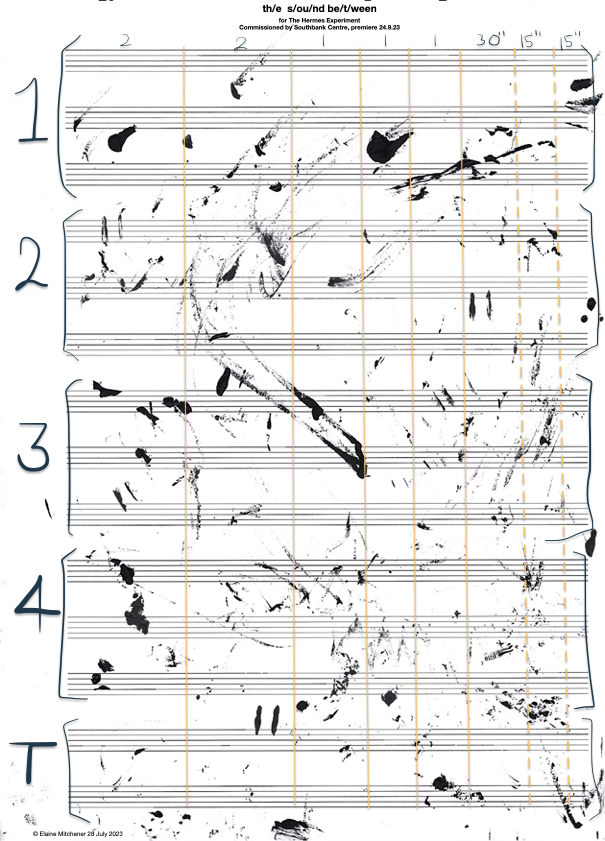
OURSELVES IN THE OTHER
“Cultures of domination rely on the cultivation of fear as a way to ensure obedience… Fear is the primary force upholding systems of domination. It promotes the desire for separation, the desire not to be known. When we are taught that safety always lies in sameness, then difference, of any kind, will appear as a threat. When we choose to love we choose to move against fear – against alienation and separation. The choice to love is the choice to connect – to find ourselves in the other.”
bell hooks, All About Love
ourselves in the other is a modern love story in four parts. It moves through the infatuation stage, building a connection and growing together, navigating conflict, and ultimately the memory/remembering of a past relationship. Musically, it navigates sonic spaces that conjure several tenets of intimacy – fuzzy ambient beating that recalls the touch of a lover, loops and samples that extend the life of a memory, blending of timbres and instruments that resemble the coalescence of once-separate lives.
Yaz Lancaster
The premiere by International Contemporary Ensemble will feature a sample bank of one possible narrative with interviews of several people regarding past and present relationships – future performances are encouraged to swap out their own recorded stories and field recordings to make the piece personal to each performance.

TOSSED PARACHUTES OF LILACS AND LUNGS
Tossed Parachutes of Lilacs and Lungs found itself in a period of my life where I sought moments of spirituality, in the bell hooks sense. Each word from the title is presented in its own way, collected in five distinctive tableaux, showcasing moments of personal wonders, either through vivid images or simply through a resonance that stirred something inside me. I always had an inclination towards multiplicity, which this piece doesn’t stray away from. The multiples here came to me in day-to-day small wonders. I leave here a few of them:
; the poetry of Nicky Beer
; the taste of clementines on the tongue
; the strings of the Kora
; the tip of an icy mountain
; the faded light on green leaves
The piece is dedicated to George Lewis and the International Contemporary Ensemble.
Corie Rose Soumah

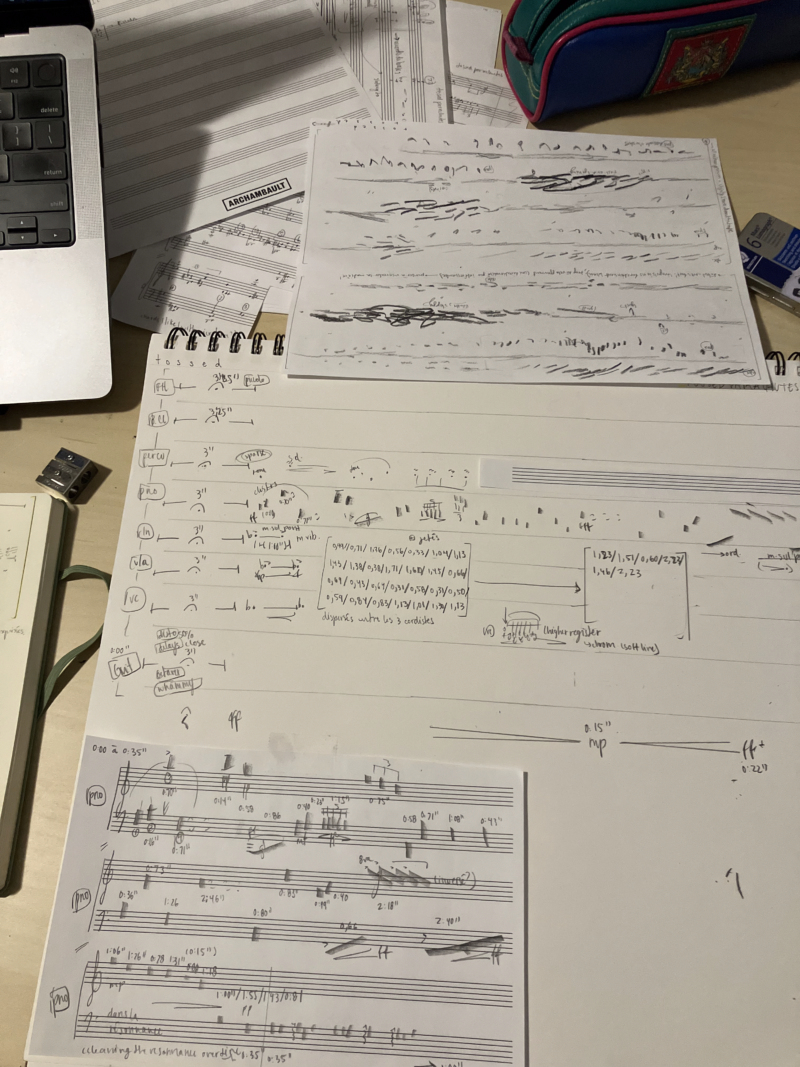
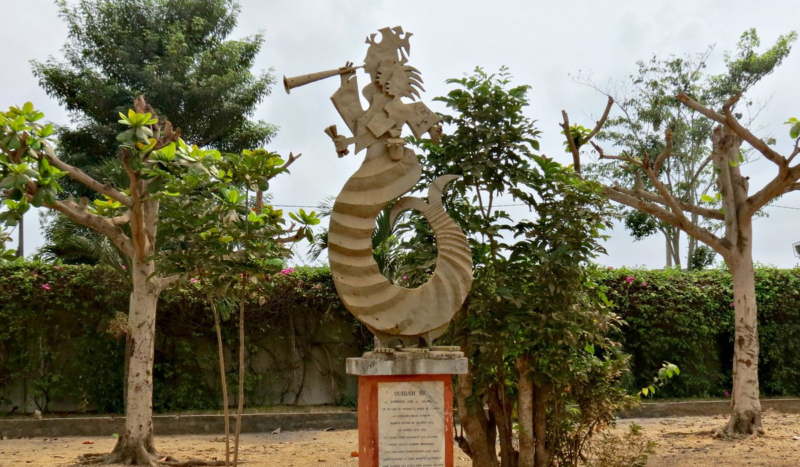
ÁRVORE
At Guadeloupe’s Mémorial ACTe, a museum dedicated to the history of the transatlantic slave trade, I stood quietly before a life size replica of a Tree of Forgetfulness. In parts of Africa, the captured once circled such trees after hanging personal tokens on their branches, entering a trance meant to erase names, memories, and selves, softening the traumatic descent from human to cargo before the Atlantic crossing. I mourned my ancestors and felt the bitter irony of using a tree, so deeply tied to roots, ancestry, and memory, as an instrument of erasure. Árvore (the Portuguese word for tree) imagines these trees not just as keepers of a painful past but as fertile organisms from which freed versions of the captured are reborn, not emptied of self but fortified by the power of kinship and collective memories. Within the work, a quote from an Afro-Brazilian chant for the Yoruba orixá Oxumarê, often linked to movement, transformation, and continuity, underlines the idea of rootedness and regeneration, where what was meant to be forgotten instead becomes a source of new and expanded life.
Marcos Balter

